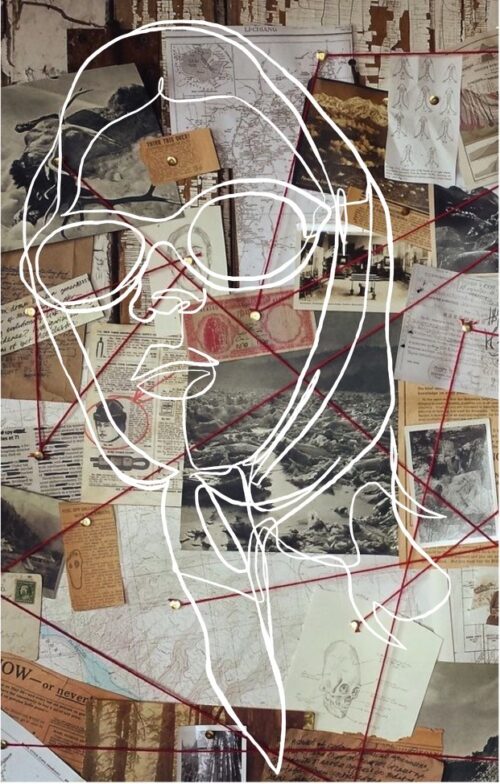Americans have an obsession with people who scam and falsify their identity, one of the most successful examples being Anna Sorokin, or her alias, Anna Delvey. The Russian-born 31-year-old deceived New York’s elite from 2013 to 2017 and swindled $275,000 from renowned financial institutions.
Journalist Jessica Pressler revealed how Sorokin exploited Manhattan in her bombshell May 2018 article for The Cut, How Anna Delvey Tricked New York’s Party People, which later served as the basis for the Netflix mini-series Inventing Anna. In the Harvard Expository Writing course Art of the Con taught by Professor Ian Shank, Pressler discussed her experience writing the profile during a virtual class visit.
In his course, Shank reveals the influence con artists have on American lifestyle and pinpoints our culture’s fascination with these impersonators. While Sorokin committed serious financial crimes, she manipulated social media and the zeitgeist in ways many students can relate to. Shank says: “At a place as competitive as Harvard—where students can and do transform themselves in a matter of years into versions of themselves that would’ve seemed inconceivable beforehand—I think this story speaks well to just how hard it is to hold onto your values while also striving to become the best version of yourself that you can.”
After hearing Sorokin’s story from a New York courthouse photographer, Pressler was impressed “by the level of people [Sorokin dealt] with, including the big law firms and financial institutions, who typically bargain with insiders, not 26-year-old nobodies.” When Sorokin was held at Rikers Island for theft of services and grand larceny, Pressler contacted her for a personal call.
During her first visit, Pressler was in awe of Sorokin’s disposition, describing her as “very sweet and polite… with a deadpan sense of humor.” Yet Pressler claimed that “one could also view [her optimism] as a red flag,” considering “how well the 26-year-old handled being locked up in one of the most notorious prisons in America.”
To begin her journey into Sorokin’s story, Pressler began tracking down Sorokin’s victims, which proved more difficult than anticipated. People seemed reluctant to divulge details of their participation in the receiving end of Sorokin’s schemes. The few people who didn’t abruptly hang up the phone gave limited if any details. According to Pressler, “they would try to downplay their relationship with Anna.” Some would even try to convince Pressler that she should be focusing on something more significant for her career, which only magnified the elusiveness of the story. After persistent outreach, Pressler was able to set up meetings with two important figures in Sorokin’s schemes: Neff, a close friend of Sorokin’s and the concierge at the 11 Howard Hotel, and ‘Pharma Bro’ Martin Shkreli, one of Anna’s so-called “dear friends.”
Speaking on her personal interactions with Sorokin, Pressler commented: “I came to appreciate [Sorokin’s] truthfulness. Because of her situation, I was always very careful not to take anything she said as fact, but looking back, while other people lied, I don’t think [Sorokin] ever told me anything overtly untrue; however, she would omit certain pertinent information sometimes.” Sorokin would say, “I asked Rob, the CEO of Blade, if I could get a jet to fly to the Berkshire Hathaway conference….” disregarding that she promised him a wire transfer that never arrived.
After her profile gained popularity, Pressler was approached by Netflix about the possibility of a mini-series based on her experience researching Sorokin. Inventing Anna, produced by Shonda Rhimes and based on Pressler herself, tells the story of Sorokin as she cons her way into New York City’s elite social class, and a young reporter desperate for the scoop. In the series, protagonist Vivian Kent is supposedly based on Pressler; however, Pressler describes this as a loose interpretation: “The character in the show isn’t really me. She does and says things I would never do or say, the timeline is different.”
During an initial conversation with Rhimes, it was decided that there wouldn’t be a journalist as a character in the show. However, understanding the appeal of having a character as the tour guide of the story, Pressler says “I was happy to kind of give myself over to it, because it only seemed fair, since it’s basically what I ask subjects to do all the time. And it was nice to be in the same boat as the people who had been in my story, who were also characters in the show, and not be perceived as some kind of puppet master. It was like, ‘We’re all Shonda’s puppets now.’”
The story of Anna Sorokin is not just about one unique girl, but about how social media and the art of performance can shape a false version of ourselves. “An uncomfortable fact of life is that we are, in small ways, always conning ourselves and others,” says Shank. “Every time we write a paper—or interview for a job, or go on a date—we’re putting forward a persona that is, to some degree, artificial; more a performance of the person we’d like to be or be seen as than who we truly are.”
Ariel Beck ’25 (arielbeck@college.harvard.edu) has never been conned… or at least she thinks.

